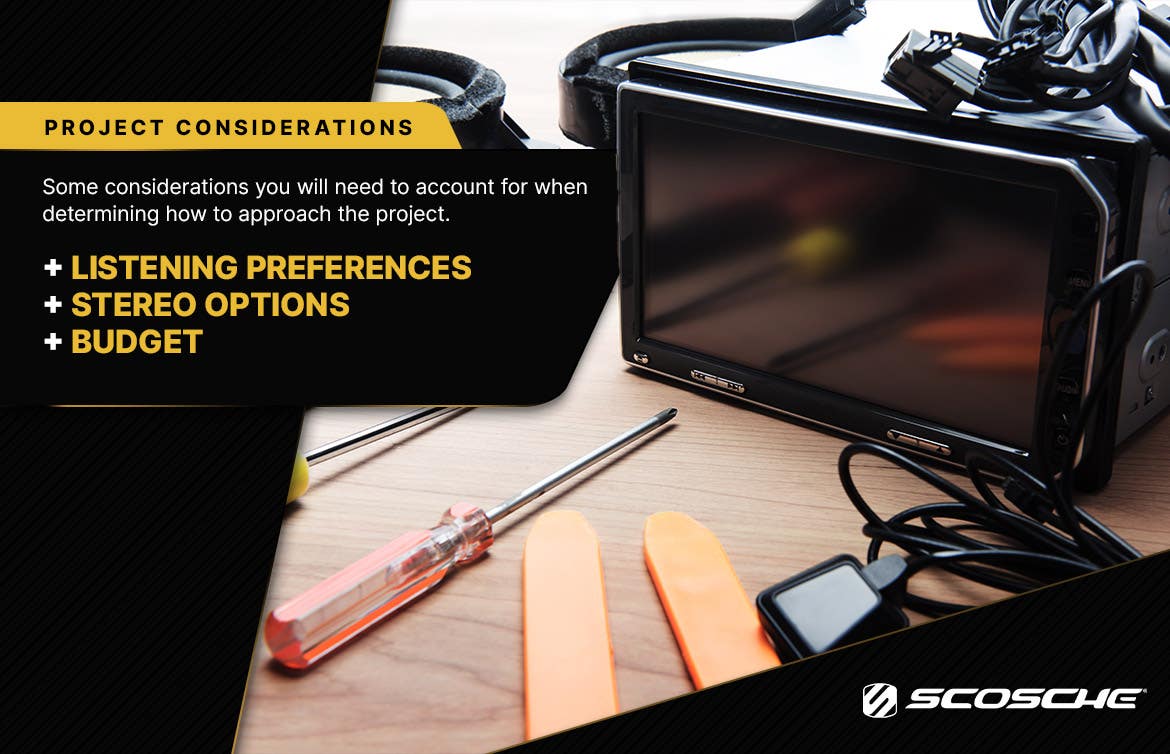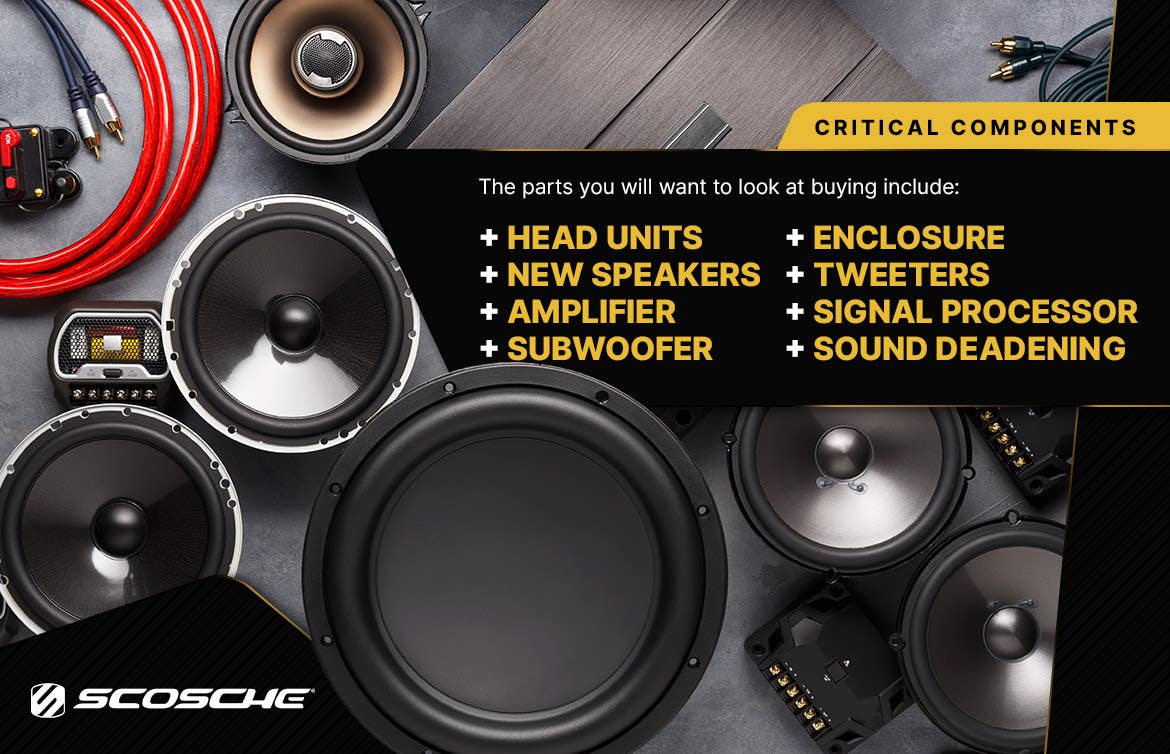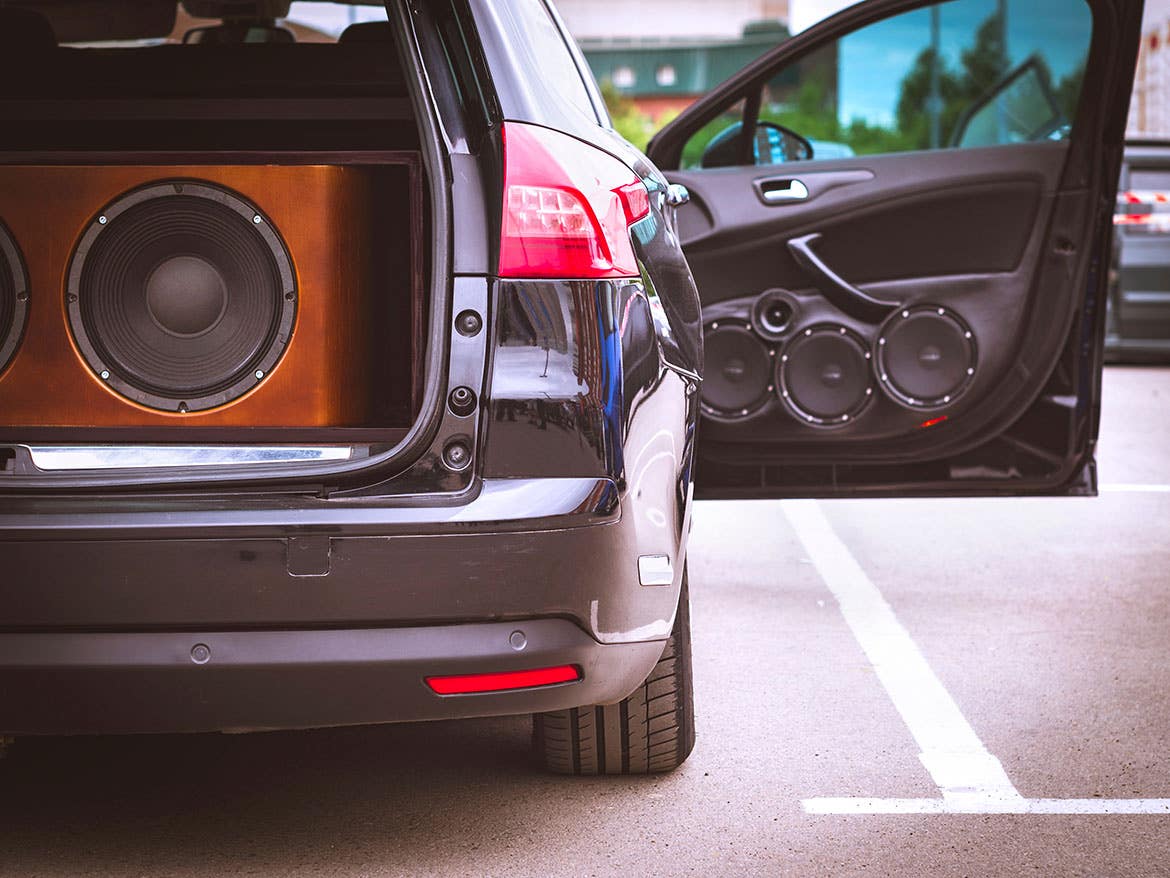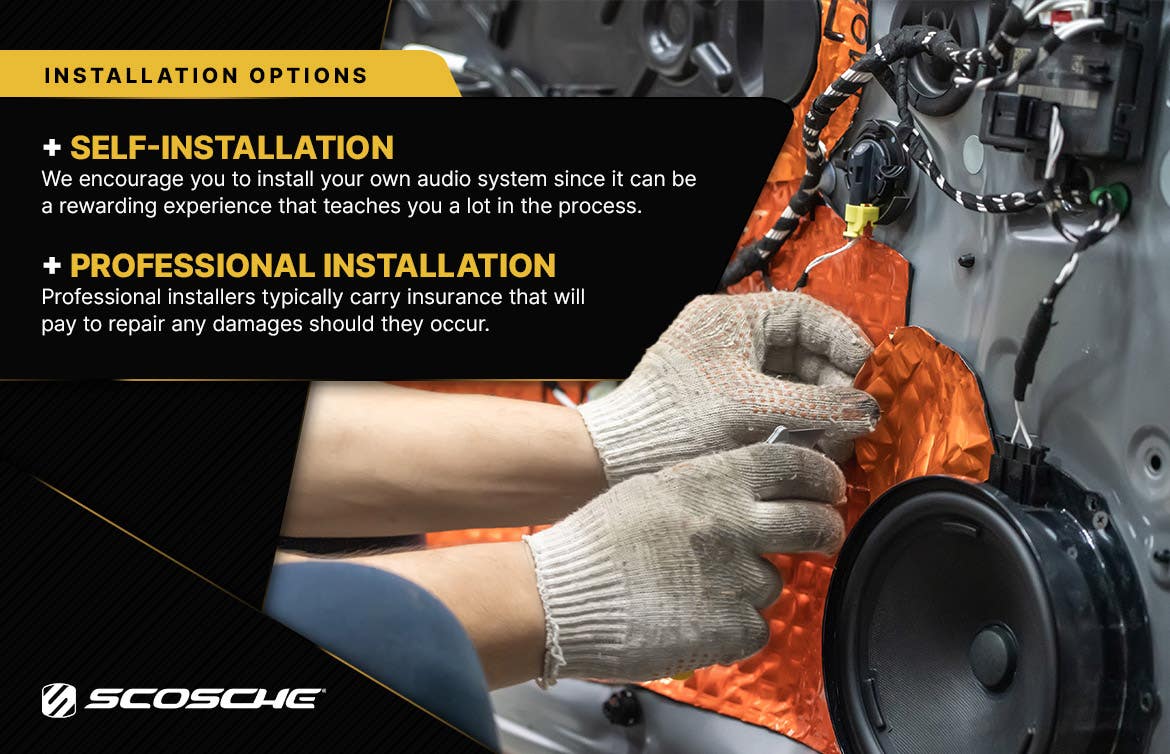How to Upgrade a Car Audio System: Step-by-Step Instructions

Americans are keeping their cars for longer, with the average vehicle on U.S. roadways clocking in at just over 12 year old. What this means is that many people are driving around with pretty poor sound systems.
Many cars are not factory-equipped with great sound. Then when 12 years gets added to those speakers, it is safe to say that drivers aren’t getting the best sound possible.
On top of this, commute times for the average person recently hit a new record. Put these facts together, and it becomes clear that figuring out how to upgrade your car audio system is an important task for making your time behind the wheel a bit more enjoyable.
However, given how many components make up your sound system, it can be challenging knowing where to begin. Many questions quickly arise, including:
- What size speakers do I need?
- Should I get a double DIN dash kit or stick with what I have?
- What the heck are tweeters?
- Do I need a professional to install this or can I do it myself?
If you want to know how to upgrade your car audio system, but you aren’t sure how to get started, look no further. Here is everything you need to know to give your vehicle’s sound system a serious boost.
Signs Your Sound System Needs an Upgrade
First, it is important to state that many people upgrade their sound system just because they want a better audio experience. On the other hand, some folks might be fine purchasing a Bluetooth car adapter so they can listen to Spotify and call it a day.


However, given the average age of American vehicles, there are a few indicators your car audio needs some work. Those signs include:
- Abnormal noises, static or other sound discrepancies
- Distortion or lack of clarity when volume is up high
- Bass sounds hollow
- Lack of speaker vibration
These are just a few of the basic signs that it is time to give your car’s audio system a bit of TLC.


How to Upgrade a Car Audio System: Project Considerations
If you’ve come to the conclusion that you either need or want to upgrade your car audio experience, there are some considerations you will need to account for when determining how to approach the project.
Some things you will need to contemplate include:
Your Budget
Upgrading your vehicle’s audio system can be a costly endeavor. Therefore, it is vital for you to figure out how much money you are willing to invest in the project at this time.
Depending on how much you are going to set aside, you can either make small improvements over an extended period or go all-out and replace the entire system at once.
Your Listening Preferences
If you like to listen to your music loud, this is something you will need to factor in to your selections. Cranking up the tunes to top volume (or just fairly loud) demands good speakers and an amplifier. This will need to be accounted for in your budget.
At the same time, if thumping bass is important to you, then you will want to include a subwoofer in your sound system. Unless you opt for a powered subwoofer, these are often accompanied by a new amplifier.
Stereo Options
When figuring out how to upgrade your car audio system, you will need to establish if you want to keep your factory stereo and simply improve the sound you are getting from it or if you want to start from scratch and build a new stereo system outright.
No matter which route you choose to take, there are many upgrade options for you to choose from that can make dramatic improvements.
With these considerations in mind, let’s go ahead and take a look at what you might need to upgrade your vehicle’s sound system.


How to Upgrade a Car Audio System: Critical Components
First, as touched upon earlier, when mulling over the pieces and parts you will need for this project, be aware you don’t have to get everything all at once. Instead, you can create a plan of action to build your ideal system over a period of time.
The parts you will want to look at buying include:
Head Units
Head units are the beating heart of your car audio system. This is essentially what enables you to play and listen to music, the radio and anything else that comes out of your speakers.
The head unit also enables features like GPS navigation, Bluetooth and other niceties. This is one item you should seriously consider upgrading, as the audio line level on an aftermarket unit is going to be of much higher quality than the one from the factory.
However, in swapping this component out, you may also need to pick up a car audio installation kit that fits your vehicle and the head unit.
New Speakers
Speakers are the items everyone immediately thinks of when upgrading their car audio system. However, do be aware that a new head unit is likely to make your factory speakers sound better. If you still feel that you need new speakers, then by all means, shop away.
Assuming you drive a four-door (or more) vehicle, it is wise to first get speakers for up front where you sit. Afterward, you can move farther back and purchase for what your budget can accommodate.
Furthermore, before you settle on a set of speakers, it is important to ensure they will fit in your vehicle, as speakers are not a one-size-fits-all piece of equipment.
Fortunately, there are online tools and guides to help you find a match.
Pick Up an Amplifier
With the speakers upgraded, it is time to pick up an amplifier to give them some extra juice. The additional power an amplifier brings will allow you to maximize your speaker’s potential and bring a new dimension of clarity to the sound you achieve.
When shopping for an amp, be aware you will need a four-channel amplifier to power the front and rear sets of speakers.
Additionally, if you plan on integrating a subwoofer (which we will discuss momentarily), you can power it using the rear channels of the amp. However, you will eventually want to add a dedicated subwoofer amp.
Install a Subwoofer
For those who opt to build their sound system from the ground up, the subwoofer is often the crown jewel. However, even if you aren’t looking for your car’s bass to be heard from blocks around, subwoofers add depth to the listening experience.
If you do choose to wade into this territory, it is important to know there is some nuance to the subject, and you will need to understand how to match your amplifier and subwoofer for the optimal experience.


Add in an Enclosure
Likely the most economical add-on to this project is a subwoofer enclosure.
For those who are unfamiliar, a subwoofer enclosure (often called a subwoofer box or housing) is used to contain the audio frequencies generated from the back of the speaker and ensure the front frequencies of the speaker do not cancel out the rear ones.
In simple terms, this means subwoofer enclosures serve to elevate the sound quality of the subs and add depth to the listening experience.
These are typically installed in the vehicle’s trunk or backseat and can either be purchased or built oneself, depending on your woodworking skills.
When shopping for a subwoofer enclosure, you should consider whether you want a ported or sealed subwoofer box. In a nutshell, a sealed box will provide a tighter sound but requires more power, while a ported box is “boomier” and takes up more space in your vehicle.
Throw in Some Tweeters
Tweeters have nothing to do with Twitter.
If you don’t know what these are, tweeters are small speakers that produce the high-frequency sounds woofers and other speakers cannot generate. These help to balance out your entire system and help to give further clarity to the overall audio experience.
If you are going to install a subwoofer in your vehicle, it is highly advisable to get some tweeters as well.
Procure a Signal Processor
Too often, signal processors are viewed as something nice to include in a premium audio system but not really necessary. In reality, the moment your budget allows for a signal processor, you should absolutely include it in your car audio system. This device can significantly improve the overall performance of the system by smoothing out the frequency response of the speakers. The end result is a highly realistic (sometimes described as “lifelike”) sound that is in many ways unparalleled.
Processors can be purchased as stand-alone units and installed between the unit and the car’s amplifier or you can purchase an amp with a signal processor integrated into the unit.
Include Sound Deadening
Finally, if you want to go the extra mile with your sound system and get the absolute highest quality of sound possible, then you may want to add a layer of sound deadening to your vehicle.
While this is by no means necessary, sound deadening will serve to block out noise from your engine, other motorists and road construction and make the interior of your vehicle quieter. Ultimately, this will serve to improve the quality of sound coming out of your system by a significant margin.
However, if you choose to go this route, it is vital you do your research and select a high-quality product, as not all sound deadening is created equal. Some of these, instead of remaining adhered to the vehicle, will melt and turn to goo when it gets hot outside.
Therefore, it is vital to ensure that you select a product with a proven track record.


How to Upgrade a Car Audio System: Installation Options
After picking out all of the components you will use to upgrade your car audio system, you need to decide how to install everything.
There are two ways to approach installation.
Self-Installation
Installing your audio equipment on your own, depending on how much of an upgrade you are doing, can be quite a complicated project. Modern vehicles are more complex than older ones, thereby making audio installation more of a challenge.
Additionally, there are specific tools you will need to complete the job. Therefore, if you don’t already own them, they will also need to be accounted for in your budget.
Often when installing an aftermarket stereo system new wiring is required to connect the head units to the amps, amps to speakers and amps to the battery for power. Scosche also sells wiring kits to make this process as easy as possible.
If this is still something that interests you, we highly encourage you to instal your own audio system since it can be a rewarding experience that teaches you a lot in the process.
Professional Installation
Having your new equipment installed by a professional is advisable, as the risk of damaging your vehicle or equipment is far lower. Moreover, professional installers typically carry insurance that will pay to repair any damages incurred during the process should this occur.
If you have opted to purchase an expensive audio system, this is not the time to start pinching pennies.


Upgrading Your Sound System
While there is a lot to know when it comes to how to upgrade a car audio system, it is important to keep in mind it does not need to be tackled all at once.
Take your time to research each component you think you may want or need to ensure you get something to serve you well. Once you know what you are looking to achieve, be sure to seek out a competent installer who can ensure everything is hooked up correctly and installed properly.
Image Credits
EugenePut/Shutterstock.com
A3pfamily/Shutterstock.com
DedMityay/Shutterstock.com
optimarc/Shutterstock.com
Alefat/Shutterstock.com
n_defender/Shutterstock.com